This post may contain affiliate links. Please see our disclosure policy.
Lilac jelly is the perfect way to preserve the fleeting beauty of lilac season and enjoy it long after the flowers have faded. With its light, floral sweetness, lilac jelly is a wonderful treat to enjoy or share with loved ones as a unique homemade gift.
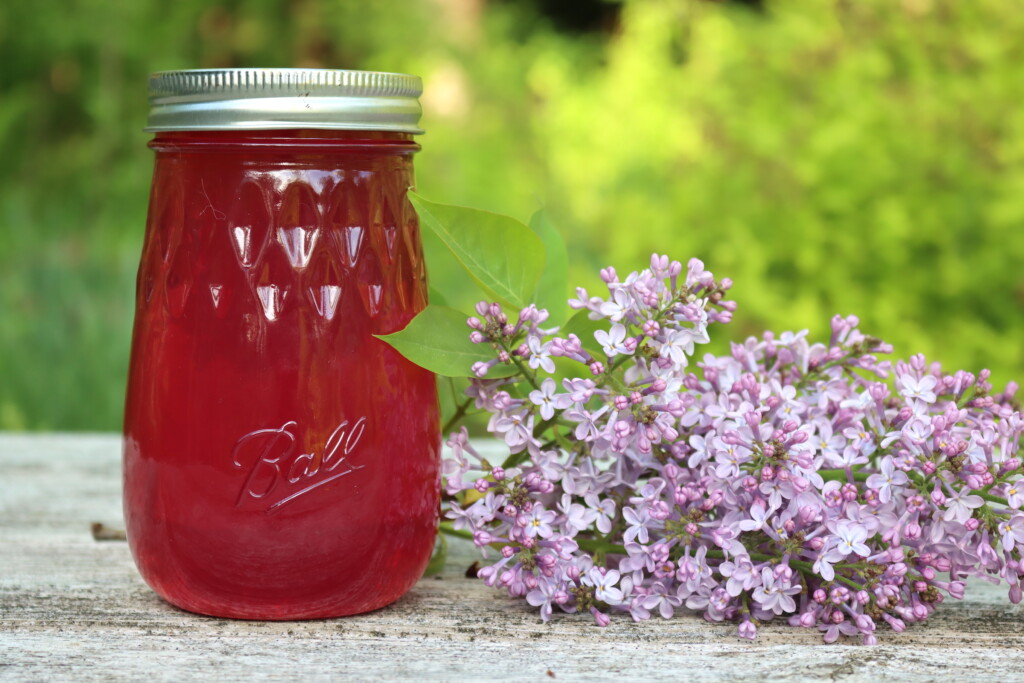
Lilacs are one of the sweetest signs of spring. Their heady, nostalgic fragrance fills the air for just a short window each year—but you can capture their fleeting beauty in a jar by making lilac jelly. This floral preserve is light, delicate, and aromatic, with a subtle sweetness and a hint of citrus. While lilac blossoms aren’t strongly flavored, their scent infuses beautifully into a gentle jelly, making it perfect for spreading on scones, drizzling over yogurt, or gifting in spring baskets.
Lilac jelly is made from a floral infusion—essentially a tea made from lilac petals. While the flavor is lovely, lilacs don’t impart much color on their own. If you want your jelly to have that romantic purple hue, adding a few blueberries or blackberries to the steeping liquid can help bring it to life without changing the flavor.
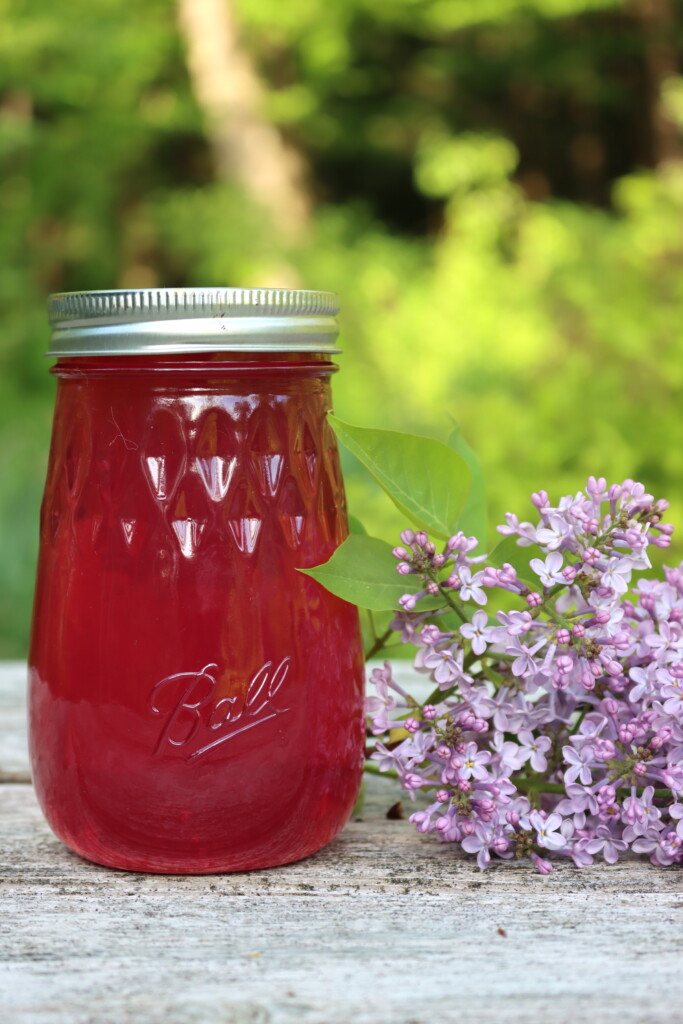
A Quick Look at the Recipe
- Recipe Name: Lilac Jelly
- Recipe Type: Flower Jelly Recipe
- Canning Method: Waterbath Canning
- Prep/Cook Time: 30 Minutes
- Canning Time: 10 Minutes
- Yield: 4 to 5 half pint jars
- Jar Sizes: Quarter Pint, Half Pint or Pint
- Headspace: 1/4 inch
- Ingredients Overview: Edible Flowers, Water, Lemon Juice (not optional), and sugar
- Difficulty: Easy! You’re basically making a quick tea and setting it with pectin.
- Similar Recipes: The process is very similar to making other edible garden flower jellies, including Peony Jelly, Pansy Jelly, Forsythia Jelly Tulip Jelly or Rose Petal Jelly.
What Does Lilac Jelly Taste Like?
Lilac jelly has a taste that is both delicate and bright. The flavor is mild, with a floral sweetness that’s reminiscent of honey or lavender but without being overpowering. There’s a slight tang from the lemon juice, and the overall sensation is one of lightness and freshness—just like the smell of lilacs in the spring air.
It’s not as bold as some fruit jellies but has a subtle elegance that makes it perfect for pairing with mild cheeses, or simply enjoying on a warm slice of bread. Personally, I love it on fresh baked biscuits or scones.
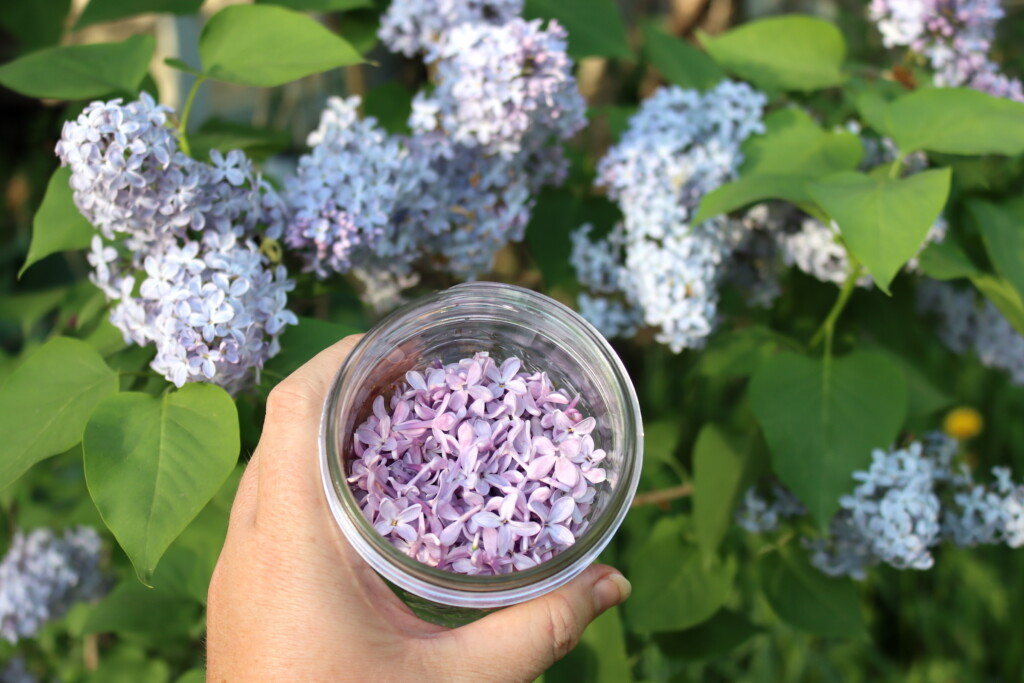
Ingredients for Lilac Jelly
The ingredients for lilac jelly aren’t all that different from any other homemade floral jelly, and all you really need is a bit of floral tea, lemon juice, sugar and pectin. Here’s what’s in the preserve:
- Lilac Blossoms – You’ll need 2 to 4 cups of fresh lilac petals. Be sure to remove all stems and green bits, which can add bitterness. Only the fragrant purple petals should go into your infusion.
- Water – This is the base of your lilac tea, the liquid you’ll transform into jelly.
- Lemon Juice – Adds brightness and acidity, balancing the floral tones and helping the jelly set properly. It’s also required for safe preservation, so don’t skip it!
- Powdered Pectin – A gelling agent, essential for turning your lilac tea into a spreadable preserve.
- Granulated Sugar – Provides sweetness and structure. Standard powdered pectin needs a 1:1 sugar-to-liquid ratio, but low-sugar pectin alternatives are available.
- Blueberries or Blackberries (Optional) – Just a few berries will lend color to your jelly. They don’t affect flavor but will enhance the final look.
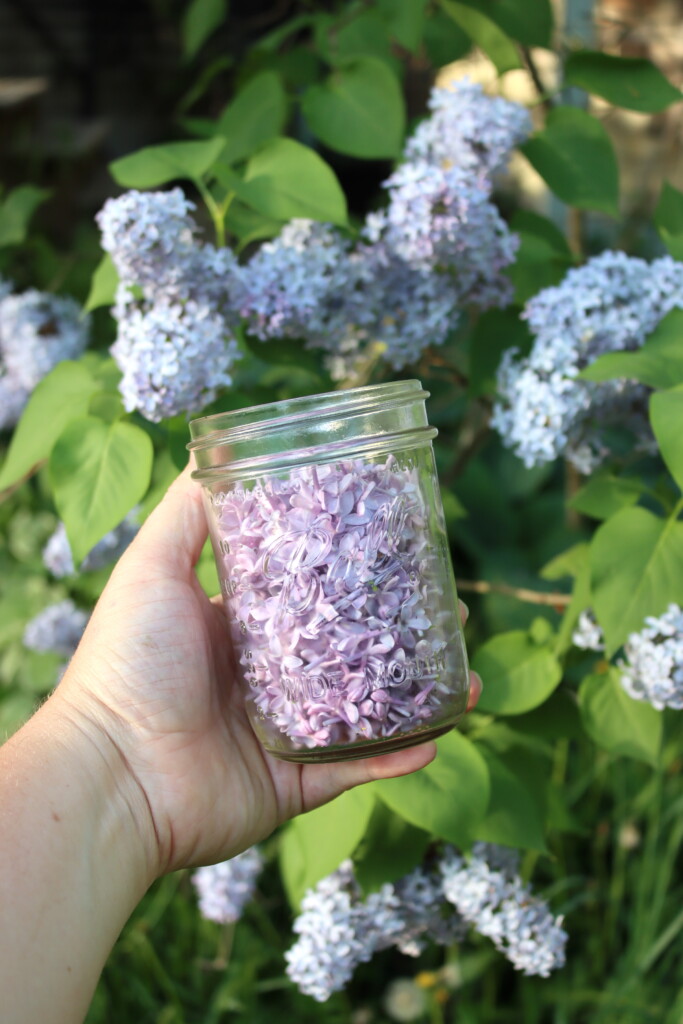
How to Make Lilac Jelly
Start by harvesting fresh lilac blossoms. Choose blooms that are fully open and free from browning or insect damage. Gently pluck the petals, avoiding all green parts and stems. Measure out 2 to 4 cups of petals into a heatproof bowl or quart mason jar.
Bring 4 cups of water to a boil and pour it over the lilac petals. If you’d like a hint of color, add 4 to 5 blueberries or blackberries and gently crush them with a spoon. Cover the bowl and let the petals steep for 15 to 20 minutes. This floral tea will serve as the base of your jelly.
While the petals steep, prepare your water bath canner. You’ll need clean jars and lids, and enough water to cover the jars by at least an inch. Bring the water in your canner to a simmer so it’s ready for processing.
After steeping, strain the liquid through a fine mesh sieve or cheesecloth to remove the solids. You should be left with about 4 cups of lilac tea. Stir in 2 tablespoons of fresh lemon juice to help balance the flavor and set the jelly.
Pour the tea into a large saucepan and bring it to a boil. Once boiling, stir in one box (1.75 oz) of powdered pectin and keep the mixture at a rolling boil for one full minute. Only after the pectin has cooked for a minute should you add the sugar—4 cups for a traditional jelly. Stir until completely dissolved, then bring the mixture back to a rolling boil and cook for one more minute.
Remove the pot from the heat and immediately ladle the hot jelly into sterilized jars, leaving 1/4 inch of headspace. Wipe the rims clean, apply the lids, and screw on the bands until finger-tight.
Process the jars in a boiling water bath canner for 10 minutes (or 15 minutes if you’re over 6,000 feet in elevation). Once done, remove the jars and let them cool completely on a towel-lined surface. You’ll hear the satisfying “ping” of the jars sealing as they cool. Any jars that don’t seal should be stored in the fridge and used within a month.
Properly sealed jars will keep for 12 to 18 months in a cool, dark pantry.
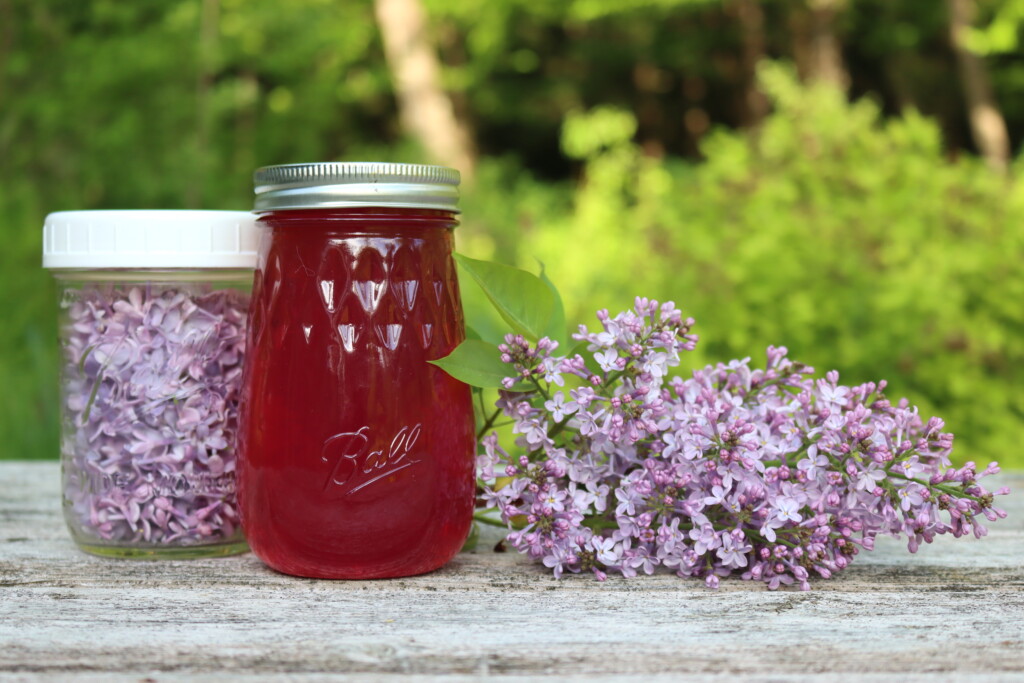
Notes on Sugar & Yield
Standard powdered pectin (like Sure-Jell) requires a 1:1 ratio of liquid to sugar to set properly—so if you have 4 cups of lilac tea, you’ll need 4 cups of sugar. This gives a traditional, very sweet jelly.
If you’d prefer a lower-sugar version, you can use Sure-Jell Low Sugar pectin. With this, you can cut the sugar to 1–2 cups while still achieving a nice set. Keep in mind that reducing sugar will slightly reduce the total yield (typically 3–4 jars instead of 5).
Pomona’s Universal Pectin is another excellent option for low-sugar jellies. It uses calcium water to activate the gelling and can handle everything from full sugar to no sugar. Follow the instructions on the Pomona’s box, using the recipe for mint jelly as your guide.
Avoid using liquid pectin for lilac jelly—it requires significantly more sugar to gel, usually 7 cups or more per 4 cups of liquid, which can overwhelm the delicate floral flavor.
If you tried this Lilac Jelly Recipe, or any other recipe on Creative Canning, leave a ⭐ star rating and let me know what you think in the 📝 comments below!
And make sure you stay in touch with me by following on social media!
Garden Flower Jellies
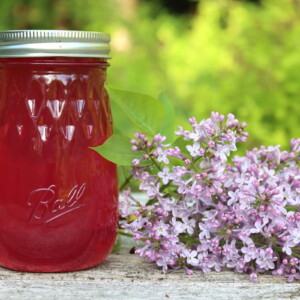
Lilac Jelly
Ingredients
- 2 to 4 cups fresh lilac blossoms, only the petals, no stems or green parts
- 4 cups water
- 2 Tbsp lemon juice, bottled
- 1 box powdered pectin, 1.75 oz or 6 Tbsp powdered pectin, see notes
- 4 cups granulated sugar
- 4 to 5 blueberries or blackberries, optional, for color
Instructions
- Harvest the Lilacs: Start by picking fresh lilac blossoms. Choose flowers that are in full bloom and avoid any green parts or stems, which can introduce bitterness. Gently pull the petals from the flowers and place them into a heatproof jar or bowl.
- Make the Lilac Tea: Pour 4 cups of boiling water over the lilac petals, making sure they’re fully submerged. Let them steep for 15 to 20 minutes. For added color, muddle in a blueberry or two. Lilacs don’t give off any color in tea, so your jelly won’t have their lovely color unless you add a few blueberries into the mix for color.
- Prepare Your Canning Equipment (optional): Get your water bath canner ready, and make sure you have clean canning jars and lids. You’ll need enough water in the canner to cover the jars by at least 1 inch, and the canner should be preheated to a gentle simmer. Canning is optional, but if canning, you can prepare the canner while your tea is steeping before you’ve made the jelly.
- Strain the Tea: After steeping, strain the liquid through a fine mesh sieve or cheesecloth to remove the petals. What you have left is your lilac tea, a beautifully fragrant base for the jelly.
- Add Lemon Juice: Stir in the 2 tablespoons of fresh lemon juice. The lemon helps balance the floral sweetness and also aids in setting the jelly.
- Boil with Pectin: Bring the lilac tea to a boil in a large saucepan or jam pot. Once boiling, sprinkle in the powdered pectin, stirring constantly until it’s fully dissolved. Let the mixture boil for a full minute. (Don’t add the sugar until the pectin has boiled in the liquid for 1 full minute.
- Add the Sugar: After the pectin has dissolved, add the sugar. Stir until the sugar is completely dissolved into the mixture. If you’re using a low-sugar pectin, you can adjust the sugar amount to your liking. The standard ratio is 1:1—4 cups of lilac tea to 4 cups of sugar, but you can reduce the sugar if you prefer a lighter, less sweet jelly.
- Boil Again: Bring the mixture back to a full, rolling boil and cook for 1 more minute to ensure it thickens and sets properly.
- Jar the Jelly: Once the jelly has boiled for the second time, remove the pot from the heat. Ladle the hot jelly into sterilized jars, leaving about 1/4 inch of headspace at the top. Wipe the rims of the jars with a clean cloth before sealing with lids.
- Seal the Jars: After filling the jars with hot lilac jelly, wipe the rims clean and place the lids on the jars. Screw on the metal rings until they're finger-tight.
- Process in the Canner: Process the jars in a boiling water bath for 10 minutes (or 15 minutes if you’re above 6,000 feet in elevation).
- Cool and Store: After processing, carefully remove the jars from the canner and place them on a towel to cool. Once they’ve cooled completely, you can store the sealed jars in a cool, dark place for 12-18 months. After opening, refrigerate the jelly and use it within a month.
Notes
Notes on Sugar and Yield
- For standard pectin (like Sure-Jell), you’ll need to use a 1:1 ratio of liquid to sugar to ensure the jelly sets properly. For every 4 cups of lilac tea, you’ll need 4 cups of sugar. This results in a sweet, traditional jelly.
- If you prefer a lower sugar jelly, consider using Sure-Jell Low Sugar pectin. This allows you to use less sugar (as little as 1-2 cups) while still achieving a nice set. The yield will be slightly less with low-sugar recipes, so expect 3-4 jars instead of 5.
- Pomona’s Universal Pectin is another great option if you’re looking for a low-sugar jelly. Follow the instructions that come with the pectin using their recipe for mint jelly for the best results, as this pectin works differently.
- Avoid liquid pectin—while it works, it requires a lot more sugar (about 7 cups for 4 cups of liquid) and is not the best choice for those looking to reduce sugar levels.
Nutrition
Nutrition information is automatically calculated, so should only be used as an approximation.
Flower Jelly Recipes
If you enjoy making jelly from edible flowers, there are plenty of other floral preserves to try.
Dandelion jelly has a honey-like flavor and a cheerful golden hue, perfect for early spring. Clover jelly offers a mild, grassy sweetness that captures the taste of sunny meadows. For something truly delicate, apple blossom jelly preserves the fleeting fragrance of blooming orchards in a pale, fragrant spread.
Forsythia jelly is bright and lemony, with a clear yellow color that reflects its sunny blooms. And grape hyacinth jelly, made from those tiny clusters of purple-blue flowers, yields a beautifully tinted jelly with a subtle floral flavor.
Nasturtium jelly, on the other hand, brings a unique peppery note, ideal for pairing with savory dishes or cheeses.
Each recipe is a unique way to preserve the beauty of spring in a jar.
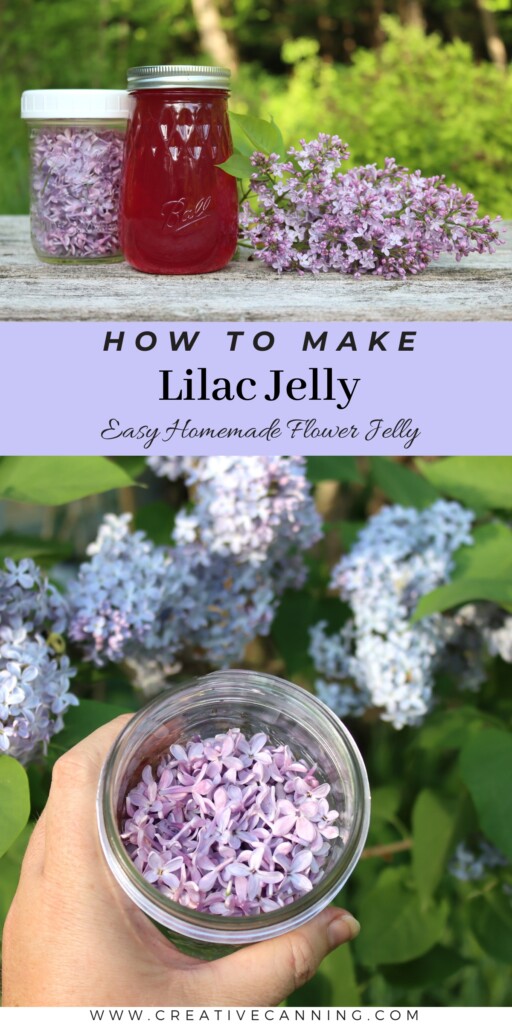
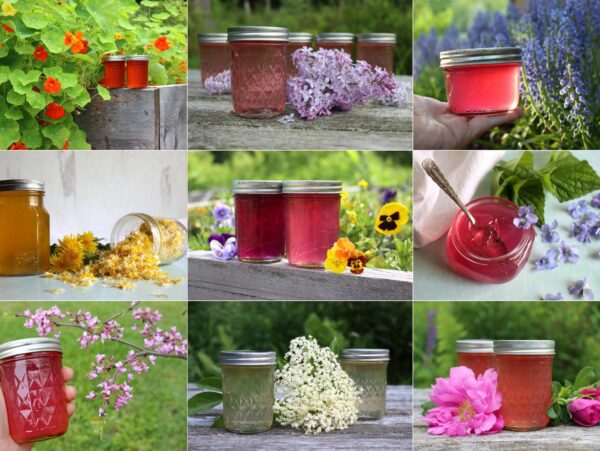
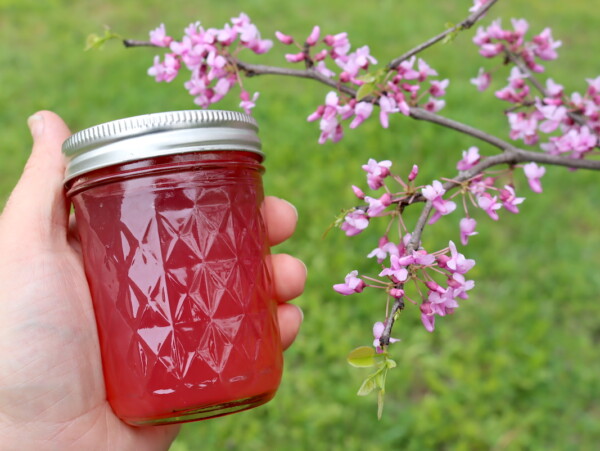
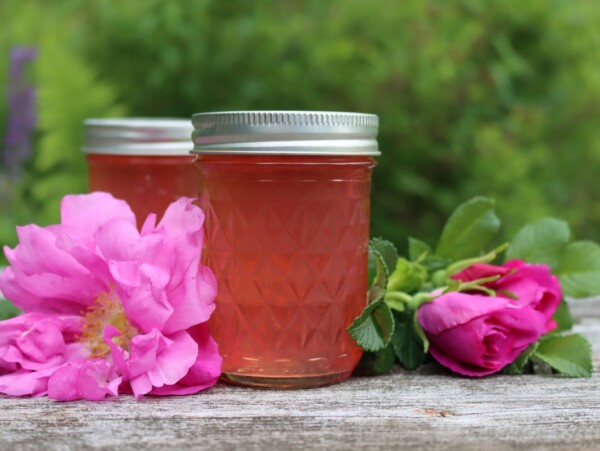
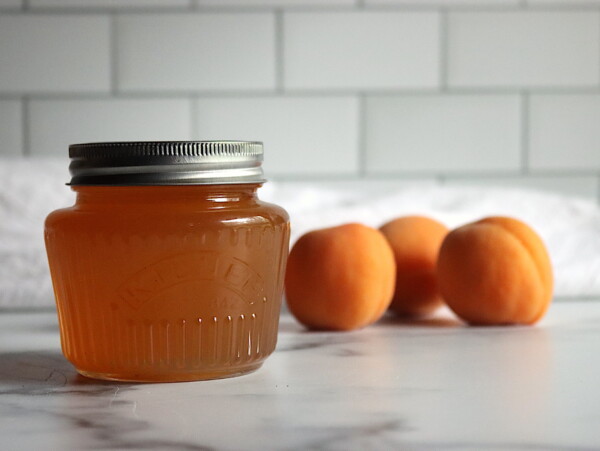
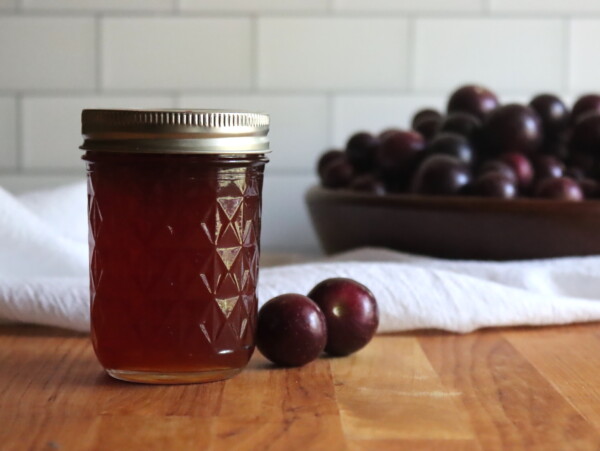
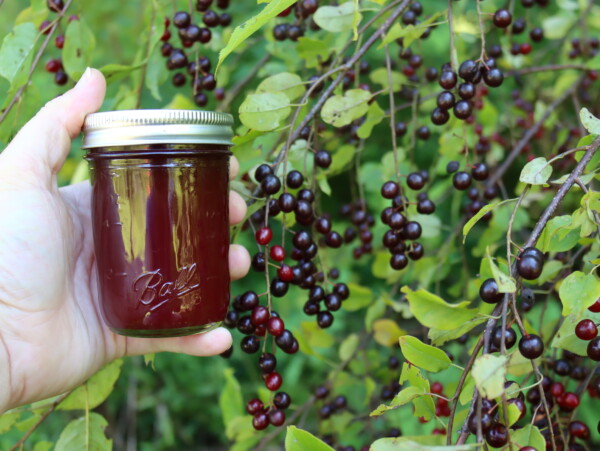
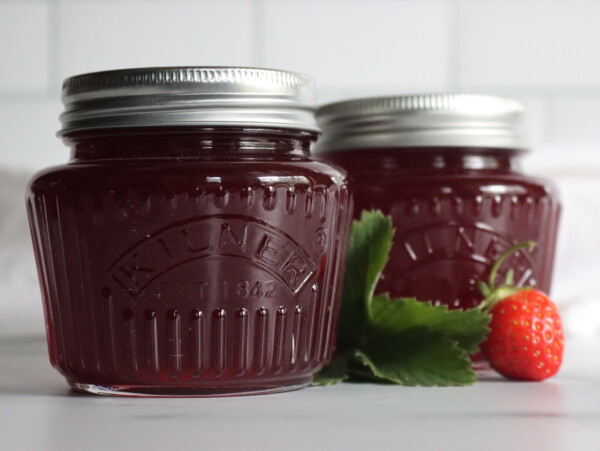
Delicious and simple, this tastes more or less exactly how lilacs smell. Just make sure you pull off those little green sepals, as they can turn the jelly bitter. But with just the petals, it’s sweet, light and floral. Perfect!
That’s not true my lilac jam is a very pretty pink. I didn’t add anything but lilacs.
Oh interesting! Maybe some varieties of lilac do give color. We have several types and all of them came out clear-ish without a blueberry or two. That’s good to know that there are some that give good color!